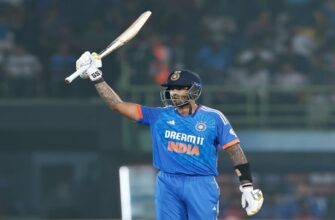The cricketing world often speaks of the “spirit of the game,” but sometimes, it`s the very soil beneath the players` feet that dictates the narrative. As India prepares to face West Indies in the second and final Test at the historic Feroz Shah Kotla (officially Arun Jaitley Stadium) in Delhi, the whispers from the ground staff aren`t about fiery fast bowlers or turning demon deliveries. Instead, they paint a rather surprising picture: a pitch designed to delight batsmen, at least for a significant part of the contest.
For a venue traditionally synonymous with slow, gripping turners that gradually bring spinners into a menacing play, the Feroz Shah Kotla appears to be undergoing a subtle yet profound transformation. Reports indicate that a fresh centre strip has been meticulously prepared, promising an even bounce and true carry – a veritable batting paradise for the initial two days of this crucial encounter.
A Deliberate Departure from Tradition
This isn`t merely a natural evolution of the surface; it`s a carefully orchestrated decision by the curators. Overseen by local expert Ankit Datta, with senior BCCI curators Taposh Chatterjee and Ashish Bhowmick providing the finishing touches, the objective seems clear: to ensure a more extended, perhaps even more competitive, match. As one anonymous BCCI source rather candidly put it, “If West Indies bat better, then the match won`t end inside three days.” A subtle jab? Perhaps. A clear statement of intent? Absolutely.
The implications are significant, especially for India`s spin-heavy arsenal. The customary “bad news for spinners” headline rings particularly true here, as their primary weapon is expected to be blunted during the early proceedings. Historically, the black-soil surface at Kotla would break down, offering purchase to tweakers as the game wore on. This time, however, the spin is anticipated to be “slowish in nature” and only truly come into effect from Day Three onwards. This means no immediate dust bowls, no sudden collapse due to unplayable turn – at least not initially.
What This Means for the Contest
For India, who comprehensively dominated the first Test with an innings and 140-run victory, this pitch presents a fresh challenge. Their formidable batting lineup will be expected to make hay while the sun shines – literally and metaphorically – piling on runs during the more benign initial phase. Conversely, their pacers will need to extract every ounce of swing and seam movement from a largely unresponsive surface, a task that demands precision and relentless effort.
The West Indies, on the other hand, might view this as a potential lifeline. After a demoralizing defeat, a pitch that offers their batsmen a fighting chance is precisely what the doctor ordered. Can they seize this opportunity, capitalize on the true bounce, and post a competitive total? Their ability to withstand India`s pace attack early on and then negate the gradual, “slowish” turn will be paramount. It`s a test of resilience as much as skill.
The curators` decision to emphasize even bounce and true carry speaks volumes about their desire for a balanced contest. Gone are the days of creating pitches solely for home advantage; modern Test cricket often seeks surfaces that encourage a more dynamic battle between bat and ball across all five days. Whether this particular “canvas” will inspire a masterpiece from either side remains to be seen, but one thing is certain: the Feroz Shah Kotla is set to offer a cricketing spectacle that deviates from its traditional script. Expect batsmen to revel, pacers to toil, and spinners to bide their time, hoping for the slow, inevitable turn of fortunes.







